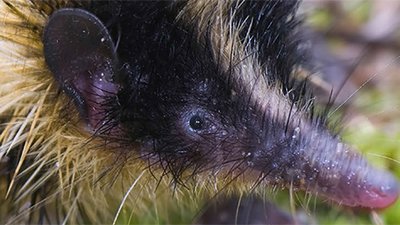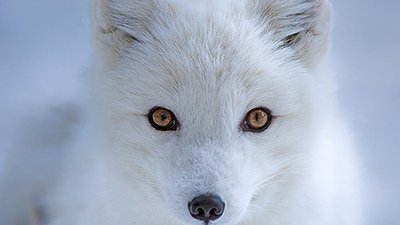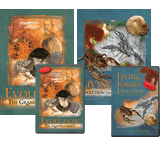
Platypus: The Mystery Mammal
Life as a Platypus
From an acorn-size egg hatches a mysterious creature with a duck-like bill, beaver-like tail, and reptile-like stance. It’s a bird! It’s a reptile! It’s a—platypus!
Around four months of age, the young platypus ventures out of its dark burrow, which is sometimes as long as 65 feet, into the Australian fresh air. The furry platypus is an adept hunter. Its front webbed feet expertly paddle through the cold waters, while the hind feet and tail steer. The flat tail also helps it dive deep.
Since flaps cover its eyes, ears, and nose, how can the platypus find food? Its bill is equipped with sensitive electroreceptors, pinpointing prey like shrimp and crayfish as the platypus digs through mud and pebbles. With its catch stored in cheek pouches, the platypus comes up to the surface to grind the food between its toothless jaws.

Image by A. C. Tatarinov, via Wikimedia Commons.
Snapshot
- The name platypus is a combination of Greek words meaning “flat foot.” The scientific name of the platypus, Ornithorhynchus anatinus, means “duck-like” in Latin.
- The platypus and the echidnas (spiny anteaters) are the only monotremes, an order of mammals that lay eggs.
- The platypus lives in and near lakes, rivers, and streams in eastern Australia.
- Platypuses vary in weight from one and a half to five pounds and can reach 20 inches in length.
- The male platypus can deliver venom through a spur on its hind ankle. This venom may kill animals like dogs and is very painful to humans.
- The platypus is generally nocturnal and is a hardworking animal, spending about 12 hours each day searching for food. Dives for food can take about a minute before the platypus comes up for air.
Divine Design
The Europeans who first encountered the platypus late in the 18th century were puzzled about how to classify an animal with mammal, reptile, and bird features. Some even disregarded the patchwork platypus as a hoax. Early studies labeled the platypus as primitive until discovery of the intricate design of electroreception, which enables the platypus to sense electrical currents from the muscle contractions of the animals it hunts.
If the platypus evolved, we would expect to find transitional forms in the fossil record. Yet platypus fossils, which have been found as far as South America, vary little from their modern counterparts. The only difference is that today’s platypus has degenerated from the early, more robust platypus. Recent evidence shows that platypuses lived at the same time as dinosaurs, a finding that fits perfectly with the creation account.
The platypus is Ken Ham’s favorite animal:
Every time an evolutionist looks at the platypus, I think God smiles! Think about it. It has a bill like a duck, a beaver-like tail, webbed feet like an otter, hair like a bear, claws like a reptile, lays eggs like a turtle, and has poison like a snake!1
After learning about the platypus, perhaps your evolutionist friend will acknowledge the Creator’s design. But don’t stop there! The God who reveals himself in creation also reveals himself in his Word—the Bible. Take your friend on a tour through Romans. Here are a few highlights to share: Romans 1:18–32, 3:19–28, 6:23, 10:9–10. Pray that God’s kindness would lead many to turn to Jesus as the only Savior from sin.
Creation Corner
Remember that everything was cursed because of man's sin (think specifically of the ground and serpent mentioned in Genesis 3). Death then intruded upon God’s perfect creation, so animals, people, and plants have had to fight for survival ever since. Because of the Curse, traits developed that would have been unnecessary before Adam sinned, like venom and stingers for attack and defense. Keep in mind, though, that not all deadly looking features necessarily had to develop! Fruit bats are a great example of how mean-looking teeth can work just as well for ripping apart vegetation, not flesh! For more about how and why deadly structures are now a part of our world, see “How Did Defense/Attack Structures Come About?”
Of course some animals are impressive for their beauty and design, too. Seeing things through the lens of Scripture, we see an all-wise and intelligent God who spoke animals into existence in a perfect world that was soon marred by sin and death. We can praise the Creator for a remnant of that incredible beauty and design still. And God has also thus provided us with examples of his intelligence and provision that we can put to good use in biomimicry. Join us in giving glory to God for his loving care for us and his creation, despite the curse.
– Editor
Footnotes
- Ken Ham, “Platypus Gift,” Answers in Genesis (blog), September 25, 2006, https://answersingenesis.org/blogs/ken-ham/2006/09/25/platypus-gift-a-reminder-of-creation/.
Recommended Resources

Answers in Genesis is an apologetics ministry, dedicated to helping Christians defend their faith and proclaim the good news of Jesus Christ.
- Customer Service 800.778.3390
- © 2024 Answers in Genesis




